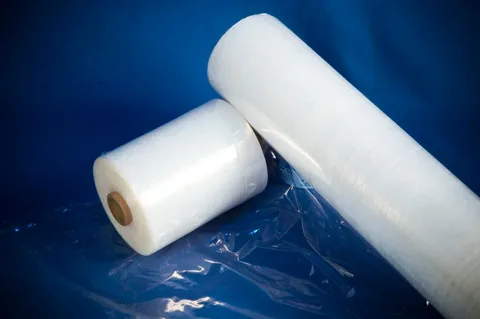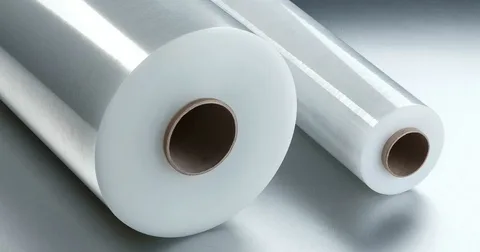When packaging products for shipping, ensuring the safety and security of your goods is paramount. This is where stretch wrapping films come into play. These films are vital in securing your items during transit and protecting against dust, moisture, and other potential damages. Look no further if you need premium stretch-wrapping films to safeguard your products. Shop now for top-quality films that will enhance the safety of your packaging.
Understanding Stretch-Wrapping Films
Stretch-Wrapping Films, made from flexible materials such as polyethylene, PVC, or polypropylene, are a cornerstone in secure packaging solutions. These films can stretch, stick, and conform tightly around various products, ensuring a solid hold. Their primary role is to encase goods in a protective layer, safeguarding them from the rigors of transportation. The unique property of Stretch-Wrapping Films cling to themselves without needing adhesives or heat sealing presents a hassle-free application process.
Their versatility makes them suitable for wrapping items of different shapes and sizes, from individual units to bulkier, palletized loads. The inherent strength of these films, combined with their resistance to tears and punctures, provides an effective defense against environmental threats such as moisture and contaminants. This resilience maintains the integrity of the wrapped items and contributes to an improved presentation upon delivery. By incorporating Stretch-Wrapping Films into packaging operations, businesses can benefit from superior product protection and operational efficiency.
 The Benefits of Using High-Quality Stretch-Wrapping Films
The Benefits of Using High-Quality Stretch-Wrapping Films
Opting for superior Stretch-Wrapping Films can significantly enhance the efficiency and reliability of product packaging processes. Such films offer a robust defense against a spectrum of environmental hazards, including dust, moisture, and contaminants that could otherwise compromise the integrity of the goods during transit. By enveloping products with a high-grade film, you ensure a protective barrier that maintains the pristine condition of the items until they reach their final destination.
Another significant advantage is the cost-effectiveness of using high-quality films. Although it may seem like a higher initial investment, the reduction in damaged goods, returns, and associated costs can lead to substantial savings over time. Additionally, the durability of these films means less material is required to achieve optimal protection, further contributing to the economic benefits.
Packaging operations are also notably enhanced. High-caliber Stretch-Wrapping Films are designed for ease of use and compatibility with various machinery, streamlining the packaging process and enabling businesses to maintain higher productivity levels. This efficiency, combined with the protective benefits, makes high-quality Stretch-Wrapping Films an invaluable asset for any company aiming to optimize its packaging solutions.
How Stretch-Wrapping Films Enhance Product Safety During Transit?
Stretch-Wrapping Films are essential in transport and logistics, significantly reducing the risks associated with the movement of goods. A compressive force is applied by wrapping products or pallets with these durable films, binding items together. This results in a unified load that is less susceptible to the vibrations and jolts that typically occur during transit. The tight embrace of the film minimizes movement within the load itself, thus reducing the possibility of abrasions, indentations, or more severe damage that might arise from items colliding or shifting.
Furthermore, depending on the specific features of the film used, the sheer layer provided by the Stretch-Wrapping Film acts as a shield against external adversities such as water ingress, airborne pollutants, and UV exposure. This barrier is particularly crucial for products sensitive to environmental factors, ensuring they remain uncontaminated and retain their integrity until delivery.
In addition to physical protection, the transparency of these films offers the advantage of easy identification and inspection of goods without requiring unwrapping, facilitating a smoother logistics process. This aspect of Stretch-Wrapping Films enhances product safety and contributes to streamlining the inspection process, ensuring that any issues can be promptly identified and addressed. By carefully using Stretch-Wrapping Films, businesses can significantly reduce the risk of product damage during transit, thereby maintaining the quality and reliability of their shipments.
Choosing the Right Stretch-Wrapping Film for Your Needs
Selecting the most suitable Stretch-Wrapping Film necessitates a nuanced understanding of your product characteristics and logistical requirements. The diversity in film thickness and material properties, such as puncture resistance or UV protection, can significantly influence the level of security afforded to your products during transit. For heavier or irregularly shaped items, a more robust film is advisable to withstand shipping stress, reducing the likelihood of tears or punctures. Conversely, lighter products may only require a thinner, more economical film to offer sufficient protection.
Compatibility with your existing packaging machinery is another critical consideration; ensure the film you choose enhances efficiency rather than complicates your operations. For manual applications, ease of use and the film’s physical properties, such as stretch ability and cling, become more pronounced in their importance. Moreover, the specific challenges your products face during transit – exposure to extreme temperatures, static sensitivity, or moisture vulnerability – should guide your selection.
Films imbued with specific protective properties can mitigate these risks, thereby preserving the integrity of your goods from warehouse to final delivery. Understanding the nuanced demands of your products and logistical processes is paramount. By carefully evaluating these aspects, you can make an informed decision that meets and exceeds your packaging requirements, ensuring optimal protection and efficiency in your shipping operations.
Innovative Features of Modern Stretch-Wrapping Films
The landscape of Stretch-Wrapping Films is continually evolving, with advancements aimed at enhancing product protection through innovative features. Among the notable developments, puncture-resistant formulations stand out, specifically engineered to combat the challenges posed by sharp edges and rough handling, thereby fortifying the packaging against breaches. Additionally, a significant leap has been made with films incorporating UV protection, a critical addition for items susceptible to degradation when exposed to sunlight during transit. This feature extends the longevity of products by shielding them from harmful ultraviolet rays, a consideration especially pertinent for goods shipped over long distances or stored outdoors.
Equally important are films designed with anti-static properties, a boon for the electronics industry where static build-up can impair the functionality and longevity of sensitive devices. These specialized films actively prevent the accumulation of static electricity, ensuring the safety of components susceptible to electrostatic discharge. Moreover, the advent of bio-based Stretch-Wrapping Films marks a stride towards sustainability, offering an eco-friendly alternative without compromising strength and flexibility. Each of these advancements reflects a commitment to addressing the nuanced demands of modern logistics and packaging, providing tailored solutions that safeguard goods from environmental and handling-induced stresses.
Practical Tips for Effective Use of Stretch-Wrapping Films
Maximizing the efficacy of Stretch-Wrapping Films involves more than just wrapping your products; it necessitates a strategic approach to packaging. Initiating the process ensures the stability of your goods on the pallet, adopting a configuration that minimizes empty spaces and prevents potential shifts in load. As you commence wrapping, the film should be applied with consistent tension, wrapping it around the load several times to establish a firm hold. This secures the products together and contributes to the overall strength of the packaging.
Attention should be paid to how the film overlaps on each layer; a recommended overlap of approximately 30% is generally effective in providing ample protection. Such attention to detail guarantees the load is uniformly secured, reducing the risk of unwrapping during transportation. Incorporating supplementary protective measures, like corner or edge protectors, can further buffer vulnerable areas against transit strains. These accessories use stretch film to distribute the load’s weight evenly, diminishing the stress concentration on any single point.
Lastly, the importance of a thorough assessment post-application must be addressed. A meticulous inspection ensures the film’s comprehensive coverage, leaving no part of the load exposed or insufficiently protected. Adhering to these practices will significantly enhance the protective qualities of Stretch-Wrapping Films, facilitating a more secure transit for your products.
Case Studies: Success Stories of Businesses Using Stretch Wrapping Films
Numerous enterprises across various industries have testified to the transformative impact of integrating high-quality Stretch Wrapping Films into their logistical operations. A notable example involves a prominent beverage manufacturer that encountered frequent challenges with product stability during transportation. By transitioning to advanced, puncture-resistant Stretch-Wrapping Films, the company witnessed a drastic reduction in transit damage and achieved significant cost savings by curtailing the need for secondary packaging.
Another success story hails from the electronics sector, where a distributor adopted anti-static Stretch-Wrapping Films to safeguard sensitive components against electrostatic discharge. This strategic move substantially diminished the incidence of product failures upon arrival, enhancing customer trust and loyalty. These case studies underscore the critical role of specialized Stretch-Wrapping Films in addressing industry-specific challenges, affirming their value as a strategic asset for businesses aiming to optimize product safety and customer satisfaction in their supply chain processes.
Conclusion
Investing in superior quality stretch wrapping films is not merely a precautionary measure but a strategic decision that enhances operational efficiency, customer satisfaction, and ultimately, profitability. The emphasis on selecting the right film according to the specific requirements of the goods and the logistical challenges they face during transit is critical. It’s about making an informed choice that aligns with your business objectives, one that guarantees not just safety and security but also contributes to the sustainability of packaging practices. In navigating the complexities of product transportation, the strategic application of Stretch-Wrapping Films stands out as an invaluable ally, fortifying your commitment to delivering excellence.
Frequently Asked Questions
What thickness of film should I choose?
The thickness required depends on the type and weight of the products being wrapped. Generally, heavier items or loads require thicker films for added strength and security. It’s advisable to assess your products’ needs carefully before making a decision.
Can Stretch Wrapping Films be recycled?
Yes, many Stretch Wrapping Films are recyclable. However, it’s important to check the material specifics and consult local recycling guidelines to ensure proper disposal or recycling processes are followed.
Are all Stretch-Wrapping Films the same?
No, Stretch-Wrapping Films vary in material composition, thickness, stretch ability, and other features like UV protection or anti-static properties. Selection should be based on your specific packaging needs and challenges.
How can I ensure my pallet load is fully secure with the film?
For optimal security, ensure you’re applying the film with consistent tension and sufficient overlap between layers. Utilizing corner or edge protectors in conjunction with the film can also enhance load stability and protection.
Is manual wrapping or machine wrapping better?
The choice between manual and machine wrapping depends on your operation’s scale, efficiency requirements, and budget. Machine wrapping often provides a more consistent and efficient process, especially for larger operations.
| Related Business Listings |
| Contact Directory |
| Local Business Profiles |



